[Freezing Preservation Tips Series] A good way to freeze cabbage! Tips to make it last longer and taste better
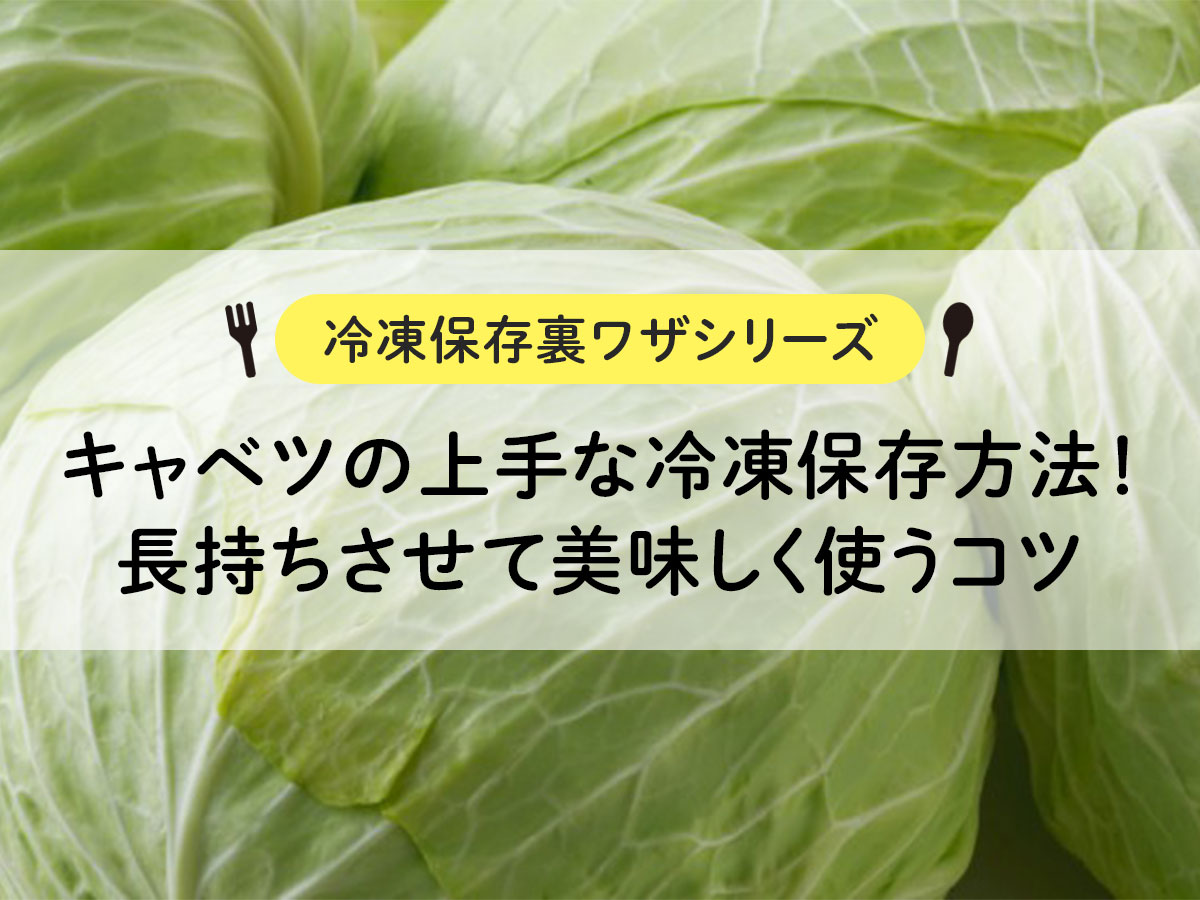
Have you ever bought one cabbage and ended up having left over because you couldn't eat it all?
If you can't eat all the food or it's too bulky to fit in the refrigerator, we recommend freezing it. Freezing it extends its shelf life, so you can use it up without wasting anything.
Also, if you are going to use cabbage right away, it is best to store it in the refrigerator. Proper storage, whether refrigerated or frozen, will maintain freshness and quality.
We will introduce effective ways to refrigerate and freeze cabbage to make it last longer, the storage periods for each method, and simple recipes using frozen cabbage.
目次
A great way to store cabbage! About refrigeration and freezing methods
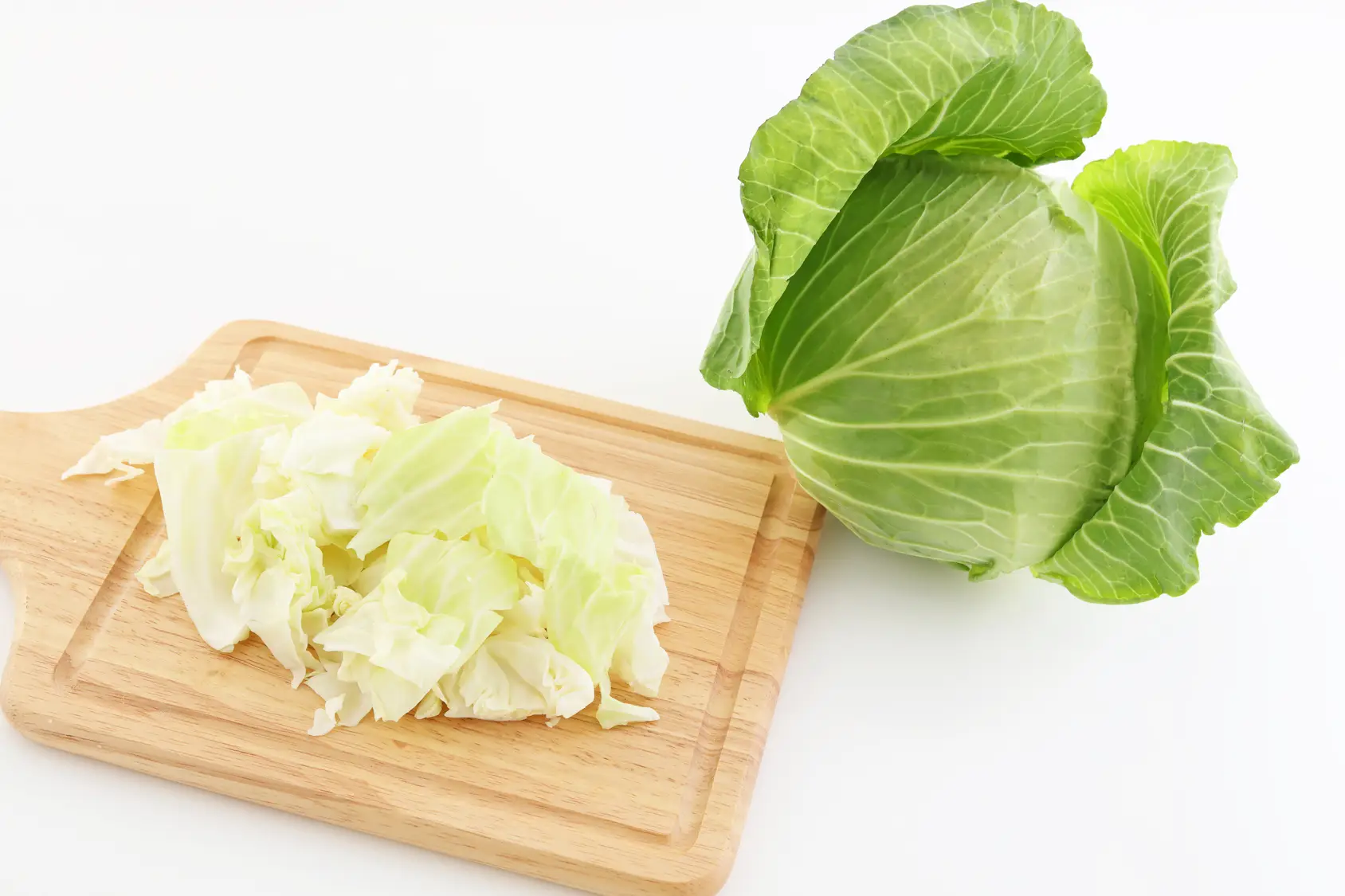
How to store in the refrigerator
If you cut the core of cabbage, the moisture will come out from the core and the freshness will decrease, so whole cabbage loses its freshness more easily than cut cabbage.
For short-term storage, it is best to peel off the outer leaves and avoid cutting the core when using cabbage.
If you want to keep it for a long time, we recommend cutting out the core with a knife, wrapping it in wet kitchen paper, and storing it in the refrigerator.
If the core is left on, the moisture and nutrients will quickly escape, so removing the core will allow for longer storage. Then, wrap the cored cabbage in newspaper or place it in a plastic bag.
If you frequently change the wet kitchen paper or use a mist to wet the newspaper, it will keep the food fresher. Also, when storing it in the refrigerator, store it with the core facing down.
When you purchase cut cabbage, it is better to remove the plastic wrap and store it. If it is wrapped in plastic wrap, it will easily peel off and lose its freshness, so please remove the plastic wrap and wrap it in newspaper or store it in a plastic bag.
How to freeze and preserve
You can freeze cabbage either raw or blanched. If you want to freeze it raw, cut it into chunks or cubes before storing it in the freezer. Soak the cut cabbage in cold water for 1 to 2 minutes, drain well, then place in a storage bag and freeze.
If you want to freeze it after blanching it, cut it into strips and roughly chop it, then quickly cook it before storing it in the freezer. Boil in boiling water for about 15 seconds, drain in a colander, wipe dry with kitchen paper, and freeze.
By quickly blanching it, it will retain its crunchy texture even when frozen.
Whether you freeze it raw or boil it before freezing, it is important to drain the water well and freeze it so that it does not come into contact with air. Place the cabbage in a storage bag so that it is thin and flat, and close the bag to create as much vacuum as possible.
It is also important to aim for rapid freezing and freeze food in a short period of time. If you place the food on a metal tray such as an aluminum tray or set the freezer temperature to a high temperature, it will freeze quickly and without sacrificing quality.
It's even better if you try to pack the freezer so that there are no gaps.
Cabbage shelf life! Regarding storage period of refrigeration and freezing
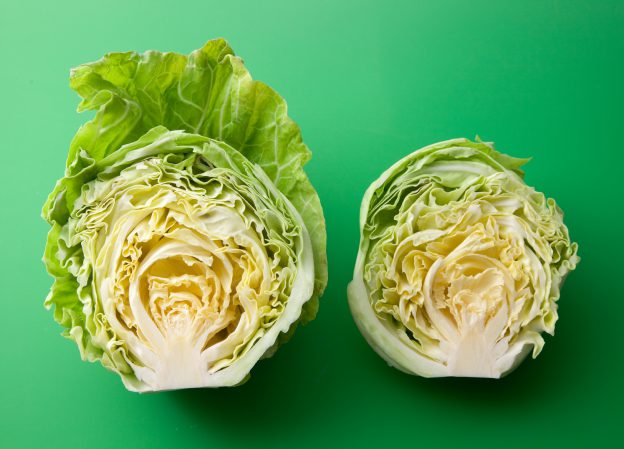
Storage period in refrigeration
The optimum temperature for storing cabbage is 0 to 5 degrees Celsius, so if you store it properly, it will last for a long time in the refrigerator. If you buy one whole piece, it can be stored for 2 weeks to 1 month.
However, once you cut the cabbage, it tends to lose its freshness, so cut cabbage will last for about a week. It is best to eat shredded or roughly chopped cabbage within 2 to 3 days.
If the meat is cut into small pieces, it has a large surface area that is exposed to air, making it more likely to discolor and dry out, resulting in a loss of appearance and flavor.
Boiled cabbage is also perishable and can only be stored for 1 to 3 days, so if you can't eat it right away, we recommend freezing it.
Storage period in refrigeration
The shelf life when frozen is about 1 to 2 months. Cabbage that is frozen raw tends to deteriorate in quality, so we recommend using it within two weeks to a month.
To use frozen cabbage, if you want to use it raw, thaw it in the refrigerator, and if you want to cook it, just cook it without thawing it.
Even when cabbage is frozen, it retains more water than other leafy vegetables such as Chinese cabbage, so it can be used fresh.
However, the crunchiness will be reduced, so it is better to use it in coleslaw salads and seasoned dishes. It becomes soft when frozen, so you can make it without the hassle of rubbing salt in the preparation process.
If you want to use it for soups or stir-fries, you can cook it frozen without thawing it. Freezing the food will help it cook better, so you can shorten the cooking time.
However, be careful as overcooking can cause the texture to become too soft. If you add it after the other ingredients are cooked, the texture will be just right.
Also, when making a stir-fry, water tends to come out easily, so frying over high heat to evaporate the water, or thawing the food and wiping off the water well before frying will result in a delicious result.
Click here if you are interested in other ways to freeze vegetables.
>> [Freezing for a long time] 3 points to keep in mind when preserving vegetables
A nutritionist explains! About the nutrition of cabbage

Nutrients contained in cabbage
Cabbage is rich in vitamin C, potassium, and calcium. Vitamin U that works on the stomach and intestines (Cabasein) is also included. Shredded cabbage is often used as an accompaniment to dishes such as pork cutlets, and eating cabbage can help prevent heartburn caused by fried foods.
Vitamins C and U are water-soluble and sensitive to heat, so it is best to eat them raw to get them efficiently. When heated, water-soluble vitamins are lost, but the advantage is that the bulk is reduced so you can eat more.
cabbage season
Cabbage is divided into spring cabbage, which is in season from March to May, and winter cabbage, which is in season from January to March. Spring cabbage leaves are soft and juicy, so they are suitable for eating raw, such as in salads. Winter cabbage becomes sweet when heated, so it is suitable for stews and stir-fries such as cabbage rolls. Soups such as pot-au-feu are recommended because they effectively absorb the nutrients dissolved in the broth.
cabbage season
Cabbage is divided into spring cabbage, which is in season from March to May, and winter cabbage, which is in season from January to March. Spring cabbage leaves are soft and juicy, so they are suitable for eating raw, such as in salads. Winter cabbage becomes sweet when heated, so it is suitable for stews and stir-fries such as cabbage rolls. Soups such as pot-au-feu are recommended because they effectively absorb the nutrients dissolved in the broth.
How to identify fresh cabbage
・Shiny dark green outer leaves
・The cut end of the core is fresh and white.
・Things with a sense of weight
For cut cabbage
・The leaves have no gaps and the core is long.
*However, be careful as it will taste bitter if it exceeds 2/3.

Nutritionist Ruri
Obtained nutritionist qualifications from Toita Women's Junior College and graduated from the same university. After graduating from Kyorin University, he also obtained a qualification as a food hygiene manager. Currently at Daybreak Co., Ltd., he oversees various food freezing experiments while disseminating food freezing information. My hobbies are traveling and hula dancing.
Delicious recipes using frozen cabbage
Cabbage can be used in a variety of dishes. Introducing recipes that are delicious and easy to make.
coleslaw salad
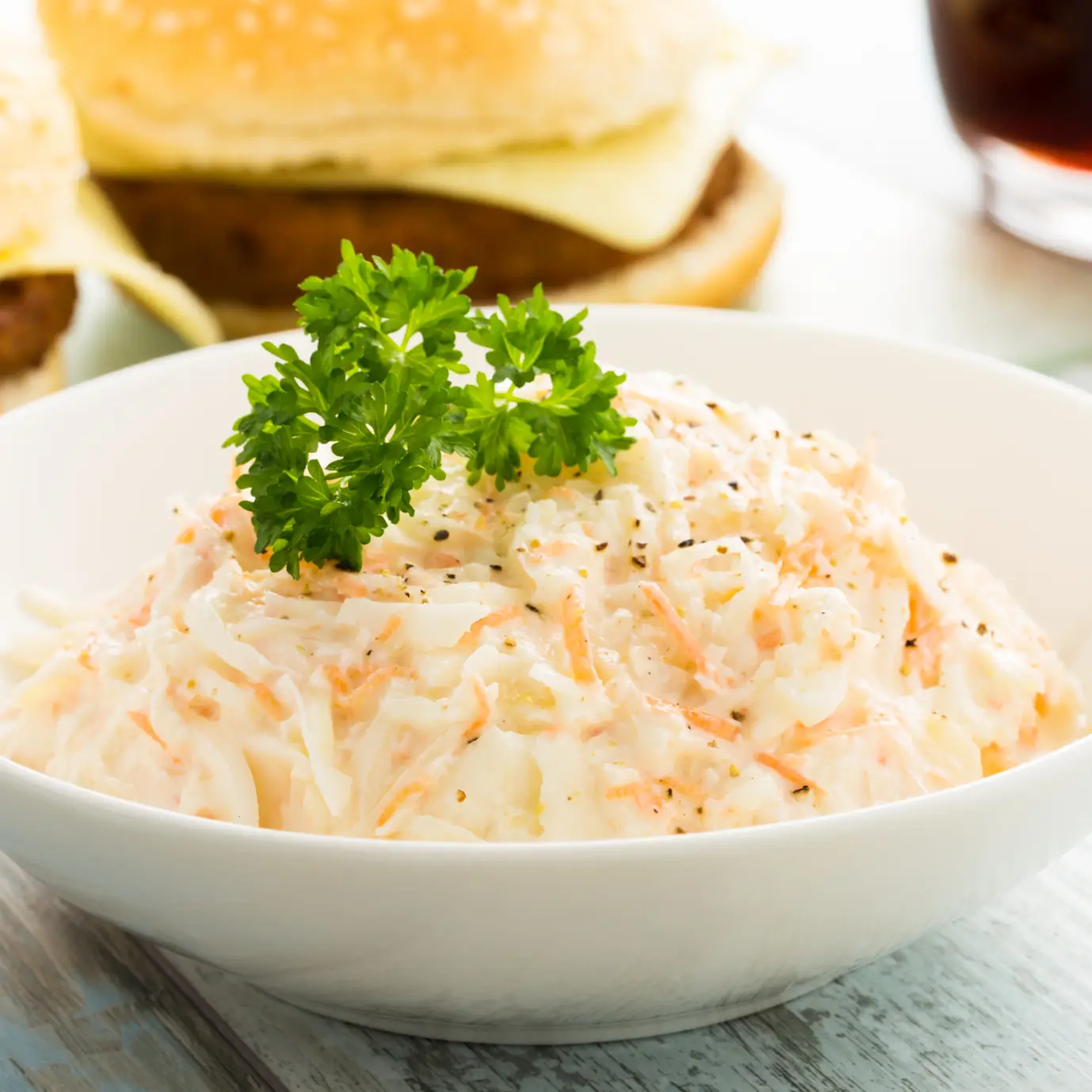
☑材料
・千切りにした冷凍キャベツ
・マヨネーズ
・砂糖
・酢
・塩コショウ
Thaw the frozen cabbage and squeeze out the water. Add cabbage and cooking ingredients to a bowl and mix to complete. It is also delicious with ingredients such as ham or corn.
Cabbage with salted kelp
☑材料
・湯がいて冷凍したキャベツ
・塩昆布
・ちりめんじゃこ
・いりゴマ
Fried vegetables
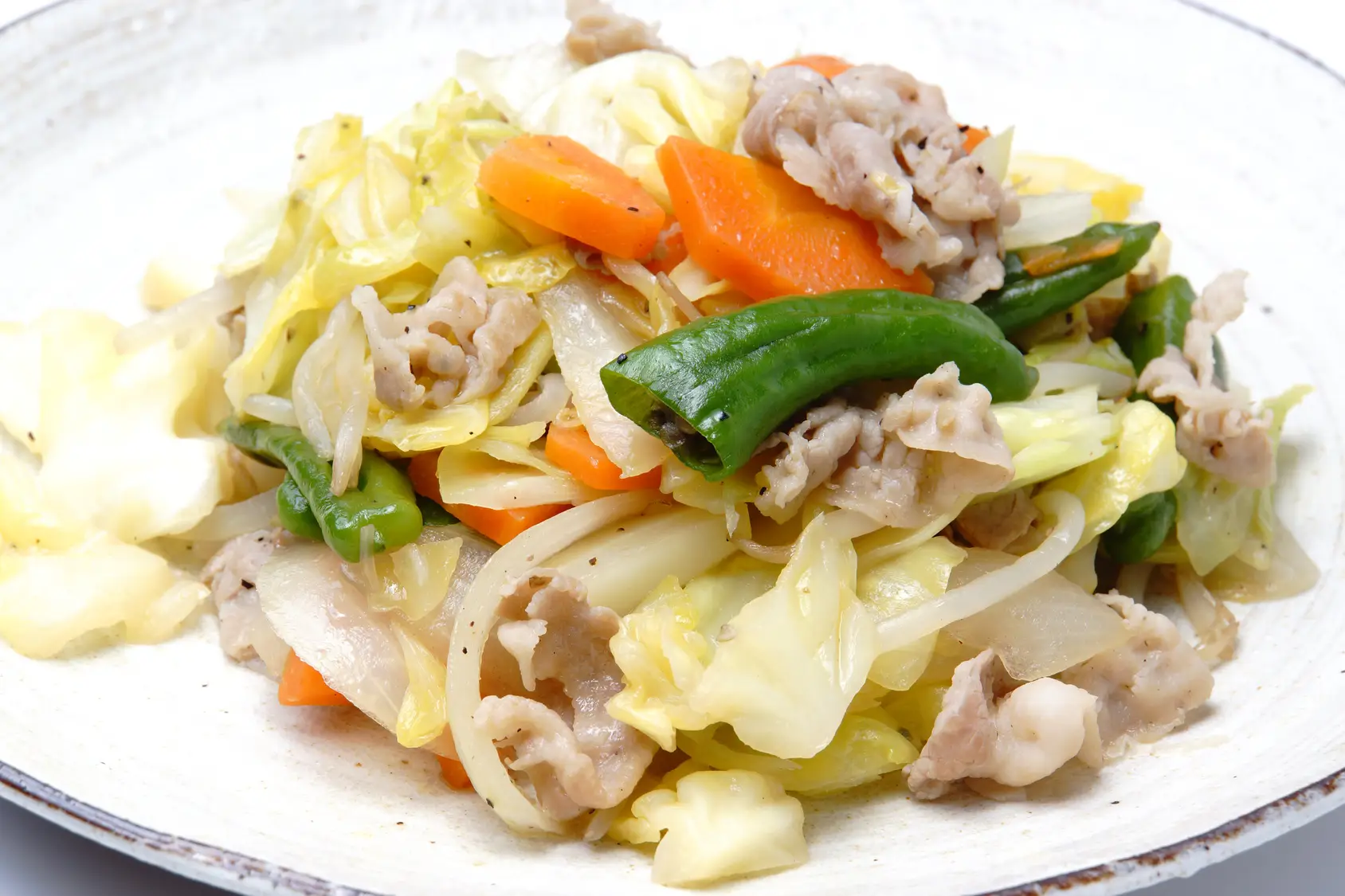
☑材料
・ざく切りにした冷凍キャベツ
・豚こま肉
・ピーマン
・ニンジン
・もやし
・鶏がらの素
・醤油
・塩コショウ
・オイスターソース
・小麦粉
・溶き片栗粉
Finely chop the peppers and cut the carrots into strips. Thaw the cabbage and mix it with the seasonings and dissolved potato starch. Coat the pork fillet with flour and fry in a frying pan with oil. Once the pork is cooked, remove it and stir-fry the vegetables.
Add carrots that are difficult to cook, green peppers, half-thawed cabbage, and bean sprouts in that order. When the vegetables are cooked, add the meat, add the seasonings that were mixed together, and when the flavors are mixed, it's done.
cabbage and pork tomato soup
☑材料
・ざく切りにした冷凍キャベツ
・豚こま肉
・玉ネギ
・トマト缶
・ニンニク
・コンソメ
・塩コショウ
・オレガノ
Finely chop the onion and garlic. Add olive oil and garlic to a deep frying pan or pot and stir fry.
Add onions and stir-fry to avoid burning, then add canned tomatoes, pork, cabbage, and consommé and bring to a simmer. Once all the ingredients are cooked, season with oregano and salt and pepper.
cabbage rolls
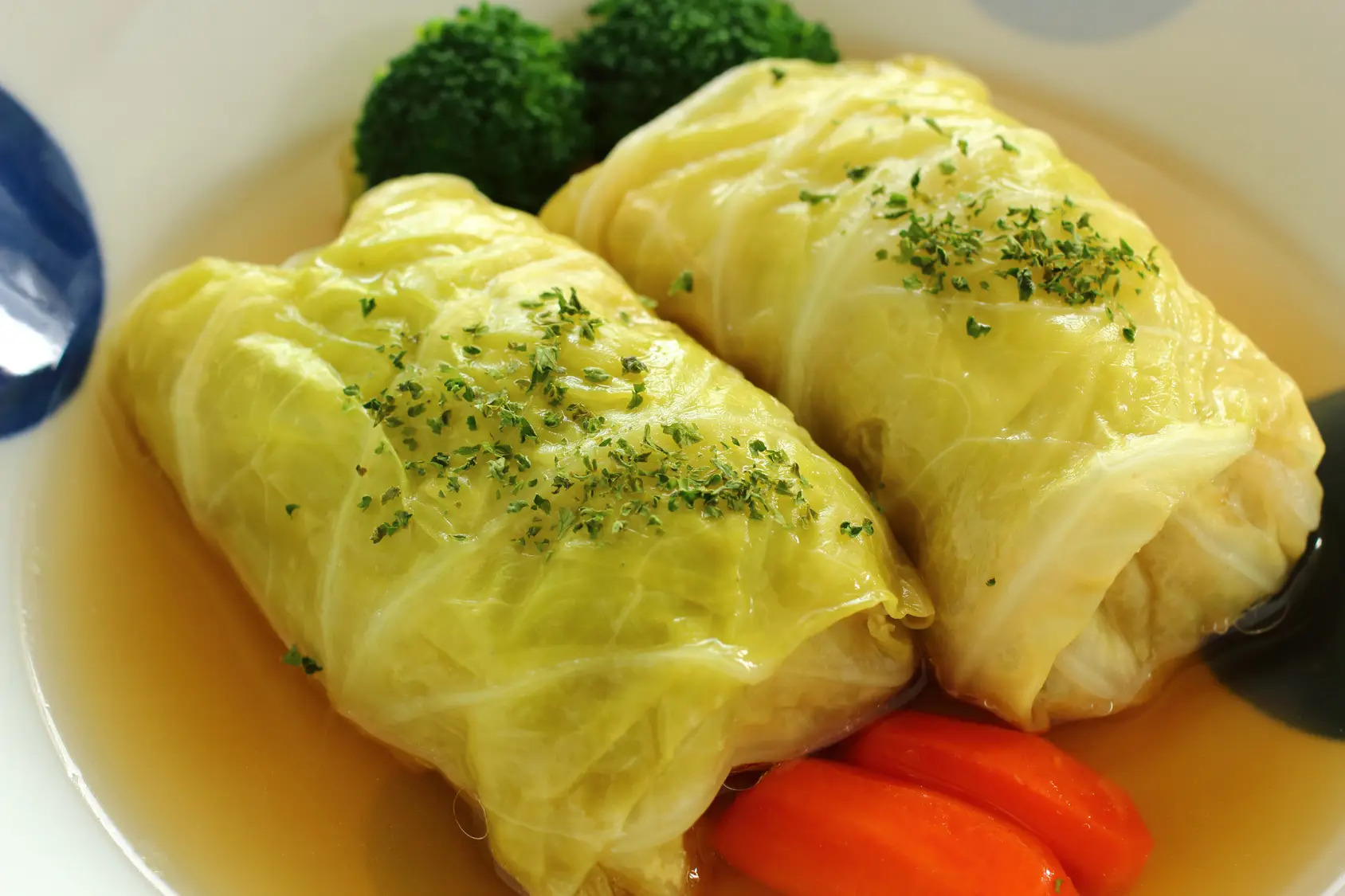
☑材料
・キャベツの葉
・ひき肉
・玉ネギ
・卵
・ローリエ
・コンソメ
・塩コショウ
・パン粉
・ナツメグ
Peel the leaves from the cabbage, wash, blanch and let cool. If the core is thick, it will be difficult to roll, so trim off the thick part. Finely chop the onion and heat in the microwave until soft.
Add minced meat, salt, pepper, and water to a bowl and mix until the consistency is to your liking. Next, add nutmeg, chopped onion, breadcrumbs, and beaten egg and mix well. Wrap the mixed meatballs in cabbage.
Place the rolled cabbage rolls in the pot with the rolled end facing down. If it easily loses its shape, use a toothpick to hold it in place.
Add water until the cabbage rolls are submerged, then add the consommé and bay leaves. Cover and simmer over medium heat for 20 to 30 minutes to bring out the flavor.
Since each cabbage roll uses a whole leaf, we recommend cooking it before freezing. You can freeze food either before or after cooking, but it is more convenient to freeze food after it has been cooked because it can be stored for a longer period of time and can be eaten just by heating it.
Conclusion
Cabbage can be used in a variety of dishes, so it's a convenient vegetable to keep on hand. However, if you buy a whole ball, it may become bulky and you may not be able to finish it all.
In such cases, freezing can extend the shelf life and allow you to use up the food without wasting it.
There is a recipe that you can easily make using frozen cabbage, so please try it.








![[Storage period increased by 30 times! ] Achieving a stable supply of raw whitebait!](https://shunkashutou.com/wp-content/uploads/2016/11/579c55e6d32e1385c250e8e7c3ed59a71.jpg)
![[Sales increased 100 times! ] rapid freezing the signature menu “Ni-katsu sandwich”!](https://shunkashutou.com/wp-content/uploads/2016/11/IMG_02391.jpg)
![[Horse sashimi] We have significantly reduced waste loss with rapid freezer!](https://shunkashutou.com/wp-content/uploads/2016/11/5fda59d0cbcdabde18e58c3c58c09ed0.jpg)




![[Storage period increased from 3 days to half a year! ] Restaurants are expanding their business using wholesale and mail order!](https://shunkashutou.com/wp-content/uploads/2018/04/66c19942ab4ba346fdb64ccc04cde373.png)
![[Reduce loss from 200 kg of oysters to zero] Improve loss and expand business with rapid freezer](https://shunkashutou.com/wp-content/uploads/2018/06/19785ca583a8d3c4041c7c192d041b0d.jpg)












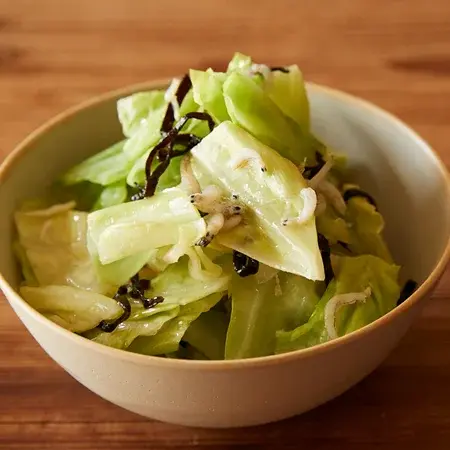
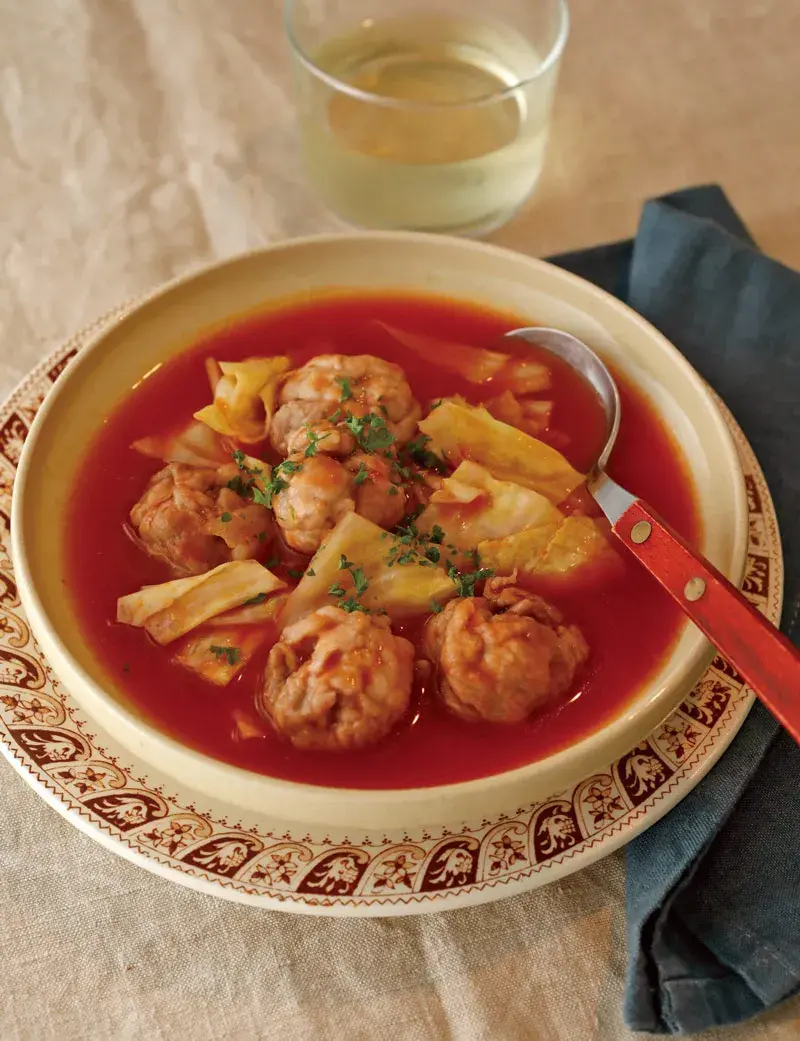


![[Delicious, Convenient, Cheap] Recommended commercial frozen foods for restaurants to purchase](https://shunkashutou.com/wp-content/uploads/2023/07/business-frozen-food-1024x682-1.jpg)
![Introducing how to freeze burdock and recipes [Explanation with photos! ]](https://shunkashutou.com/wp-content/uploads/2023/09/0812c28da547fe267723143edad2bfed.jpg)
![[Explanation of how to fry! ] Introducing how to freeze spring rolls and 5 carefully selected recipes!](https://shunkashutou.com/wp-content/uploads/2023/09/8964429f347a4ffd32dca5809cd02100.jpg)
![[Explanation with photos! ] How to freeze pumpkin, storage period, and 5 recipes](https://shunkashutou.com/wp-content/uploads/2023/10/36d3edf3acec7cf27351bd1211e770ac.jpg)
![[Explanation with photos! ] How to freeze saury, storage period, and 5 recipes!](https://shunkashutou.com/wp-content/uploads/2023/10/fff0f92d808aca2392b3eb576f218f08.jpg)
![[Freezing Preservation Tips Series] How to freeze radish deliciously and reference recipes!](https://shunkashutou.com/wp-content/uploads/2023/08/0248ce56316e8dc86c8a3ea85ff1a479.jpg)
![[Be good at saving money! ] Introducing the method and recipe for freezing fried rice](https://shunkashutou.com/wp-content/uploads/2023/10/mayo-tyahan-1024x768-1.jpg)
![[Explanation with photos! ] How to freeze butter, storage period, and 5 recipes](https://shunkashutou.com/wp-content/uploads/2023/08/4e4d4fde2efeae3d997d4356f1cc75c1.jpg)
![[Secret Technique] Introducing the freezing preservation and remake recipe of Kinpira Burdock!](https://shunkashutou.com/wp-content/uploads/2023/09/4c4b704274331befeed83cc4493acb75-1.jpg)
![[Can it be frozen? ] How to freeze mashed potatoes, how long they can be stored, and how to use them](https://shunkashutou.com/wp-content/uploads/2023/09/b7f3f25102051473b7c2f9452840a6f4.jpg)
![How to freeze natto, expiration date, baby food and carefully selected recipes [Explanation with photos! ]](https://shunkashutou.com/wp-content/uploads/2023/07/055e5e865986b68d11c3f49f11ea6008.jpg)
![[Can it be frozen? ] How to freeze fresh cream, storage period, thawing method and 5 recipes!](https://shunkashutou.com/wp-content/uploads/2023/09/1887f5bd8f2d7f9ef1d88754f2c5bcc4.jpg)
![Introducing the method and recipe for freezing green onions [Explanation with photos]](https://shunkashutou.com/wp-content/uploads/2023/09/negi5-768x512-1.jpg)
![[8 times more nutrition! ] Introducing how to freeze clams, storage period, and 5 recipes](https://shunkashutou.com/wp-content/uploads/2023/10/57204e2a2f115f810e29e365cfc86638.jpg)
![[Can it be frozen? ] How to freeze cabbage rolls, storage period, and recipe](https://shunkashutou.com/wp-content/uploads/2023/10/f5c1db9a17ef7843ffd45f5ccb160ed5.jpg)
![Introducing recipes and methods for good frozen preservation of okra [Explanation with photos! ]](https://shunkashutou.com/wp-content/uploads/2023/10/616c25d6c59f80c7a09effe2edc5ef92.jpg)
![Introducing how to freeze carrots and recipes [Explanation with photos! ]](https://shunkashutou.com/wp-content/uploads/2023/08/837a12b0247130309b466717f2b8c53c.jpg)
![[Can it be frozen? ] Introducing recipes and methods for freezing avocados!](https://shunkashutou.com/wp-content/uploads/2023/07/7b25b2d45ff983fca2a15b6ad7edf369-1.jpg)
![Introducing how to freeze ginger and recipes [Explanation with photos]](https://shunkashutou.com/wp-content/uploads/2023/09/myoga4-624x432-1.jpg)
![Introducing how to freeze corn and recipes [Explanation with photos! ]](https://shunkashutou.com/wp-content/uploads/2023/08/195a6cd4120bbae043606a677c71a7dc.jpg)

![Explaining how to freeze Maitake mushrooms, their nutritional value, and recipes! [Explanation with photos! ]](https://shunkashutou.com/wp-content/uploads/2023/09/9face03809f7fcaf2e3599773b2e8c80.jpg)
![How to freeze delicious strawberries and 5 recipes! [Explanation with photos! ]](https://shunkashutou.com/wp-content/uploads/2023/09/1509eaf30e7a2fc1b5bbc88ae15a4034-1.jpg)
![How to freeze mushroom mushrooms, storage period, and 5 recipes! [Explanation with photos! ]](https://shunkashutou.com/wp-content/uploads/2023/09/4b6ffe2ef040e90085b4ee4f0c3e72a9.jpg)
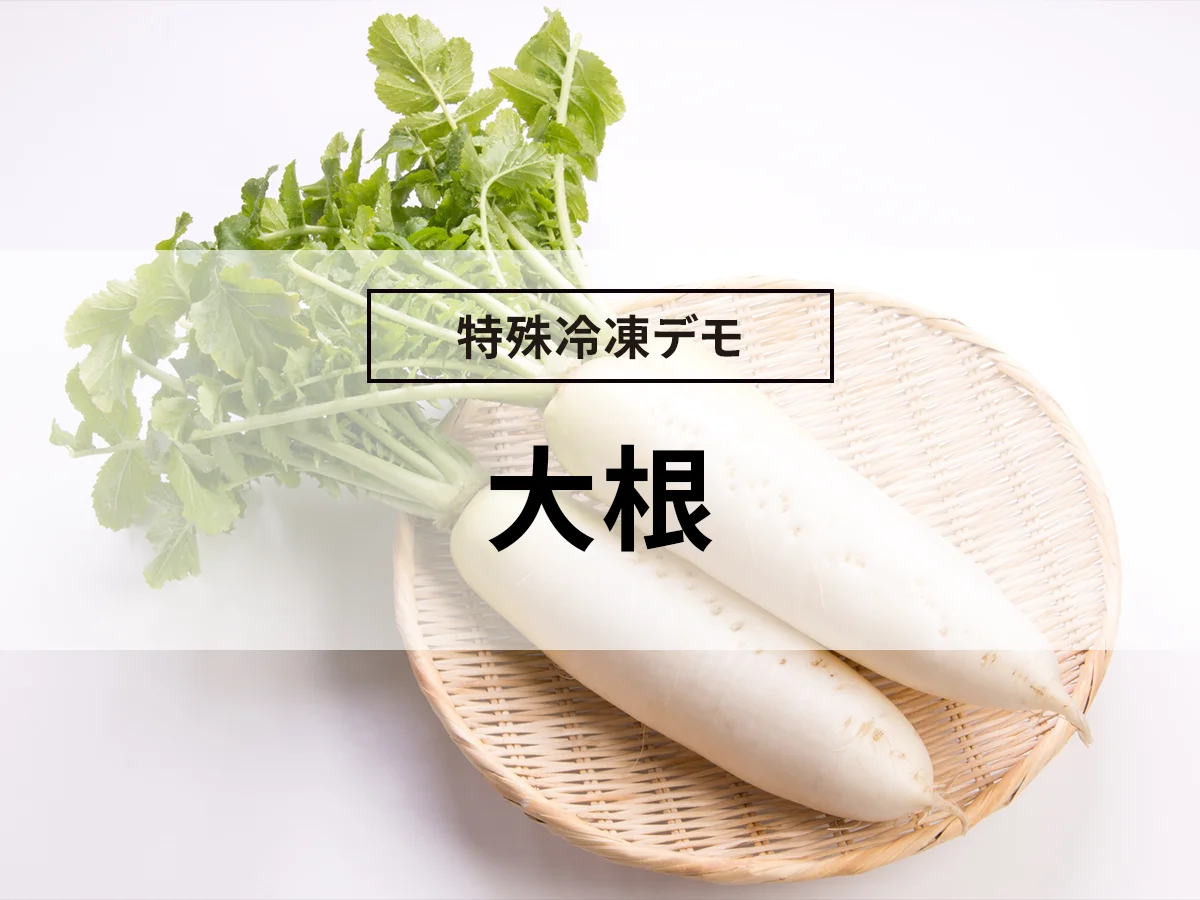
![How to freeze/thaw turnips, storage period, and 5 recipes [Explanation with photos]](https://shunkashutou.com/wp-content/uploads/2023/09/eae0789d04cc4971cf4232963b4d2231-1.jpg)
![[Explanation with photos] How to freeze winter melon, storage period, and 5 recipes!](https://shunkashutou.com/wp-content/uploads/2023/10/8c301e3fcfbb9c7f457d8b05dfea902d.jpg)
![Introducing recipes and methods for freezing spinach [Explanation with photos! ]](https://shunkashutou.com/wp-content/uploads/2023/10/spinachh-768x512-1.jpg)
![[Can it be frozen? ] 5 recipes for yogurt freezing and shelf life!](https://shunkashutou.com/wp-content/uploads/2023/10/yogurt-catch-768x512-1.jpg)
![[Can it be frozen? ] How to freeze and thaw okonomiyaki, arrangement recipe!](https://shunkashutou.com/wp-content/uploads/2024/01/58bc763c02f23a2a6442d6449853a67b.jpg)
![[How long does frozen fish and meat last? ] Interesting expiration dates and tips to extend the shelf life](https://shunkashutou.com/wp-content/uploads/2023/08/f124221382987fe32d0ffda6b6f497c1.jpg)
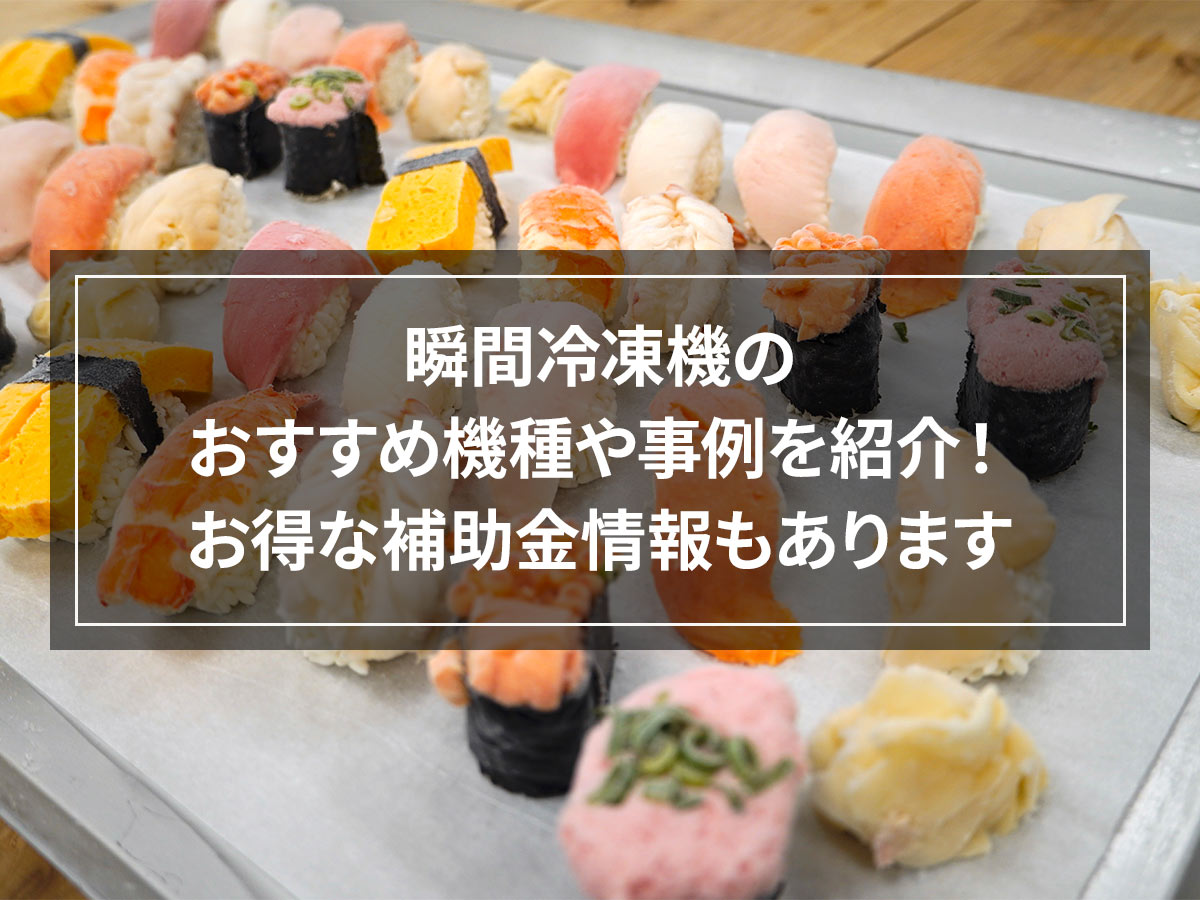
![[A little different! ? ] How to defrost frozen udon and 7 different recipes!](https://shunkashutou.com/wp-content/uploads/2023/08/91fb1e27ec38400acc9b3b6ca6233f65.jpg)
![[Explanation with photos! ] How to freeze beef, storage period, and 5 recipes!](https://shunkashutou.com/wp-content/uploads/2023/07/8717f2a867f52157bab47841b0f29019.jpg)
![[Includes grilling instructions] How to freeze hamburger steak, storage period, and carefully selected recipes!](https://shunkashutou.com/wp-content/uploads/2023/09/eb3a531f7fd023f973240f698c092b64.jpg)
![[Need to know] 7 points to thaw frozen crab deliciously](https://shunkashutou.com/wp-content/uploads/2023/08/394440560c05fb5b512d75b81a3fae4f.jpg)
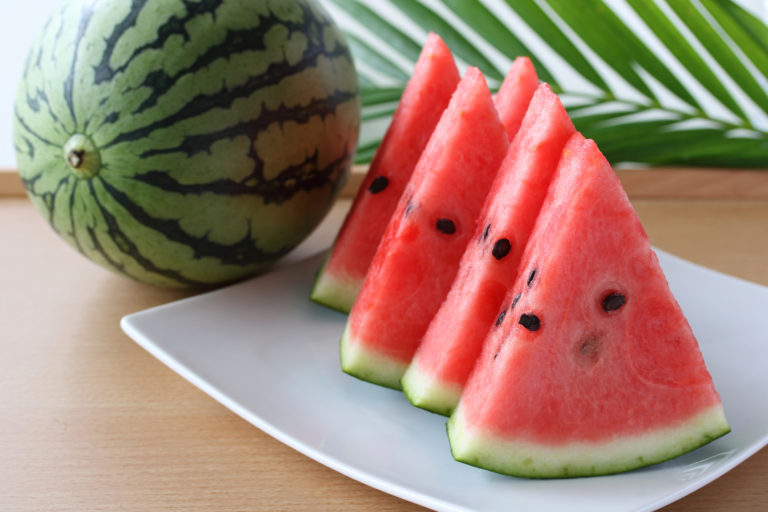

![[Can it be frozen? ] Introducing a good way to freeze green peppers and side dish recipes](https://shunkashutou.com/wp-content/uploads/2023/09/30407f106c5c082468c66af0d40c5858.jpg)
![How to freeze bitter gourd and 5 recipes! [Explanation with photos! ]](https://shunkashutou.com/wp-content/uploads/2023/09/8fe0cb793c93d4fd4c26f352d17e5b87.jpg)
![Introducing how to freeze lettuce and recipes [Explanation with photos! ]](https://shunkashutou.com/wp-content/uploads/2023/09/e550b4a0d886ba3aa277d5d8fc87ba73.jpg)
![[Explanation with photos! ] Shiitake mushroom freezing method and storage period, 5 recipes](https://shunkashutou.com/wp-content/uploads/2023/09/shiitake-768x512-1.jpg)


![Introducing the method and recipe for freezing Chinese cabbage [Explanation with photos]](https://shunkashutou.com/wp-content/uploads/2023/09/9d8d568b15f5db95f8aafa32d3796045.jpg)
![[Explanation with photos! ] A good way to freeze lotus roots and recipes to use them!](https://shunkashutou.com/wp-content/uploads/2023/10/adac4ea3f269121c4cb5e74b323508f5.jpg)
![How to freeze celery, nutrition, and 5 recipes! [Explanation with photos! ]](https://shunkashutou.com/wp-content/uploads/2023/09/serori-768x512-1.jpg)




